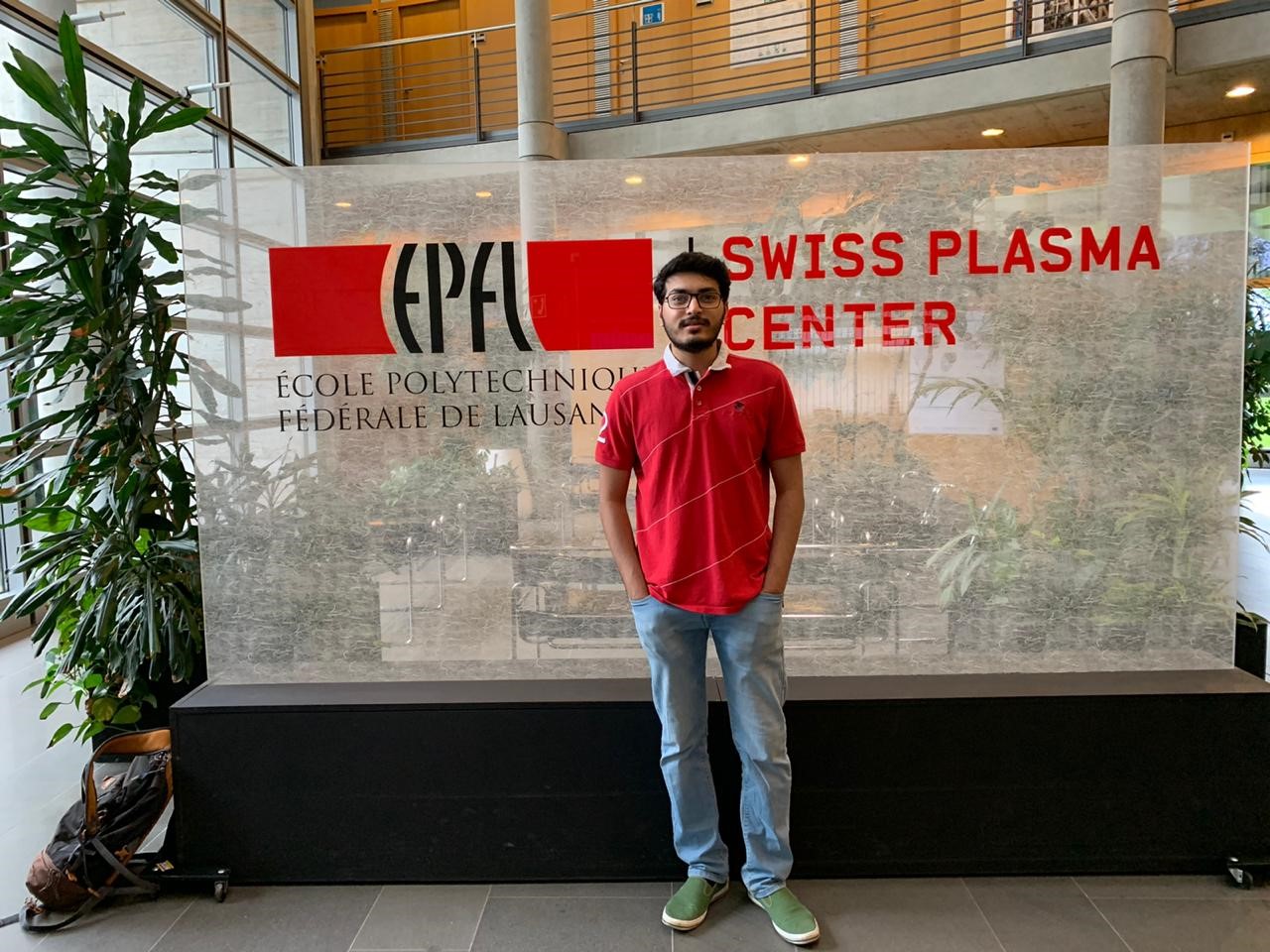In the frenzied year of 2020, I had the privilege of pursuing my Master thesis at the Swiss Plasma Center (SPC) under the guidance of Joaquim Loizu and Paolo Ricci. As those were peak pandemic times, most of the work was carried out remotely and yet reassuringly funded by FuseNet.
My thesis project sought to address the power exhaust problem; a serious concern for next-step fusion devices where the peak steady-state heat flux is estimated to exceed the available limits. Through the thesis, I investigated the possibility of using external 3D magnetic perturbations to widen the heat load on the divertor target (and reduce the peak) in diverted tokamaks. For the same, I explored the parameter space of the perturbations (i.e. external coils) to find an optimized system that produces a controlled stochastic region in the plasma edge and favourably affects the heat transport. An interesting approach that involves using permanent magnets to achieve a suitable perturbation field was also studied in collaboration with PPPL. During my initial analysis, I obtained magnetic footprints on the divertor by following field lines and characterized their heat content. Subsequently, I developed an ad-hoc heat transport model (3D Monte Carlo code that crudely emulates turbulence and ballooning effects) that made it possible to qualitatively observe the effect of perturbations on the transport in a convective regime. Eventually, the assessment revealed the potential of the approach (of controlled stochastization) for considerably reducing the peak heat load on the divertor. I am optimistic that this project would act as an incentive to carry out a more comprehensive investigation of "optimized perturbation" as a solution to the power exhaust issue.
In general, my work involved writing new routines along with interfacing of some advanced codes developed at different institutes. Apart from enhancing my knowledge of fusion plasma physics, the project gave me valuable learnings of collaborative research and on "how to approach a scientific problem". My supervisors and other scientists at SPC were very supportive during the remote work and made my thesis experience a stimulating one. Most importantly, this experience consolidated my interest in fusion and motivated me to continue in this field, the next step being a PhD.
Lausanne, where SPC is located, is a lovely city with a lot of beautiful places to visit. I lived in Marges, a small peaceful village near Lausanne, and I thoroughly cherished the view of Lake Geneva and the Swiss Alps from my room. In the weekend, I enjoyed my time going hiking, playing football, or just simply sitting by the lake.
I am grateful to SPC for providing this wonderful opportunity and to FuseNet for financially supporting me during this journey.

